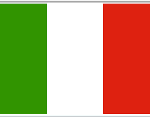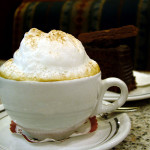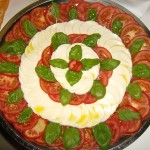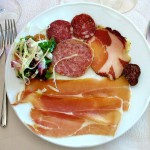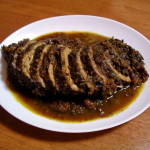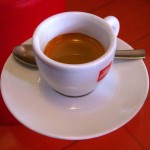Love Italian food, a tradition
People
Italians love their food and they are proud of the tradition of making their own food including breads , cakes rolls and they depend on the local produce and seasonal vegetables extensively and use them beautifully to blend and make new flavours vibrant with colours.
The essential ingredient in Italian cooking is simplicity !! with many dishes having four to eight ingredients only …Though it sounds bit unrealistic but is very true !!
Italian cooks depend mainly on the quality of the ingredients rather than a elaborate preparation . Ingredients and preparations vary by region owing to the seasonal availability of fresh produce of that particular zone. As simple it looks it is more complex on the customs involved in making and sharing of a true Italian meal . Many dishes which were more regional have evolved as global cuisine with many variations included to suit the local palette.
Ingredients Used
Italian cuisine has a great variety of different ingredients which are commonly used, ranging from fruits, vegetables, sauces, meats, etc. In the North of Italy, fish (such as cod, or baccalà), potatoes, rice, corn (maize), sausages, pork, and different types of cheeses are the most common ingredients. Pasta dishes with use of tomato are spread in all Italy.
In Northern Italy though there are many kinds of stuffed pasta, polenta and risotto are equally popular if not more so. Ligurian ingredients include several types of fish and seafood dishes; basil (found in pesto), nuts and olive oil are very common. In Emilia-Romagna, common ingredients include ham (prosciutto), sausage (cotechino), different sorts of salami, truffles, grana, Parmigiano-Reggiano, and tomatoes (Bolognese sauce or ragù).
Traditional Central Italian cuisine uses ingredients such as tomatoes, all kinds of meat, fish, and pecorino cheese. In Tuscany and Umbria pasta is usually served alla carrettiera (a tomato sauce spiked with peperoncini hot peppers). Finally, in Southern Italy, tomatoes – fresh or cooked into tomato sauce – peppers, olives and olive oil, garlic, artichokes, oranges, ricotta cheese, eggplants, zucchini, certain types of fish (anchovies, sardines and tuna), and capers are important components to the local cuisine.
Italian cuisine is also well known (and well regarded) for its use of a diverse variety of pasta. Pasta include noodles in various lengths, widths and shapes. Distinguished on shapes they are named — penne, maccheroni, spaghetti, linguine, fusilli, lasagne and many more varieties that are filled with other ingredients like ravioli and tortellini.
The word pasta is also used to refer to dishes in which pasta products are a primary ingredient. It is usually served with sauce. There are hundreds of different shapes of pasta with at least locally recognized names. Examples include spaghetti (thin rods), rigatoni (tubes or cylinders), fusilli (swirls), and lasagne (sheets). Dumplings, like gnocchi (made with potatoes) and noodles like spätzle, are sometimes considered pasta. They are both traditional in parts of Italy.
Pasta is categorized in two basic styles: dried and fresh. Dried pasta made without eggs can be stored for up to two years under ideal conditions, while fresh pasta will keep for a couple of days in the refrigerator. Pasta is generally cooked by boiling. Under Italian law, dry pasta (pasta secca) can only be made from durum wheat flour or durum wheat semolina, and is more commonly used in Southern Italy compared to their Northern counterparts, who traditionally prefer the fresh egg variety.
Durum flour and durum semolina have a yellow tinge in color. Italian pasta is traditionally cooked al dente (Italian: “firm to the bite”, meaning not too soft). Outside Italy, dry pasta is frequently made from other types of flour (such as wheat flour), but this yields a softer product that cannot be cooked al dente. There are many types of wheat flour with varying gluten and protein depending on variety of grain used.
Particular varieties of pasta may also use other grains and milling methods to make the flour, as specified by law. Some pasta varieties, such as pizzoccheri, are made from buckwheat flour. Fresh pasta may include eggs (pasta all’uovo ‘egg pasta’). Whole wheat pasta has become increasingly popular because of its supposed health benefits over pasta made from refined flour.
Traditional Food structure followed at Italy
Breakfast (Colazione)
A typical cup of cappuccino at breakfast. (photo courtesy wikipedia.org)
The traditional Italian breakfast (prima colazione) consists of caffè al latte (hot coffee with milk) or coffee with bread or rolls, butter, and jam. A cookie-like rusk hard bread, called fette biscottate, and cookies are commonly eaten. Children drink hot chocolate, plain milk, or hot milk with very little coffee. If breakfast is eaten in a bar (coffee shop), it is composed of cappuccino and cornetto (frothed hot milk with coffee, and a pastry) or espresso and pastry. Other products such as breakfast cereals, fruit salad (macedonia), muesli and yogurt are becoming increasingly common as part of the meal. However the traditional Italian breakfast varies by region and by season. In some regions such as Tuscany and Umbria, in the past, people used to drink red wine (notably Chianti) in which they would dip their biscuits.
It is also very common for some Italians to have a quick breakfast snack during the middle of the morning (typically a small panino, or bread roll).
Launch (Pranzo)
An Insalata Caprese, a cold dish which might be consumed at a lunch in Italy during the hot summer.
Lunch is traditionally regarded as the most important meal. Most shops traditionally close down in the pausa pranzo (lunch break) between 13:00 and 16:00. In most schools, children are given a lunch break when they can go home for lunch, or eat at the school cafeteria, or eat a packed lunch. Since the introduction of fast foods, takeaways and frozen and tinned foods, Italians tend to eat less home-made food, but fresh food is still quite common, and most people buy bread, milk and other foods daily. Many adults still make their own food (e.g. tomato sauce from their own tomatoes), and takeaways are still not very frequent. A typical Italian lunch consists of a first course (pasta, rice or similar), a second course (meat, fish or vegetables) and fruit.
Commuters and other workers tend to eat less at home, but instead have a quick meal in a restaurant or pizzeria. Many foreign fast-food chains operate in Italy, especially in big cities and along motorways. Italian fast-food chains are also prevalent, often featuring versions of local dishes, including Autogrill, which makes panini, small pizzas and more traditional Italian meals.
Mid-afternoon snack (Merenda)
See also: Merienda
Many children and adults have a mid-afternoon snack called merenda, generally consumed after school or in mid-afternoon. This may include a wide variety of foods. Traditionally, merenda was similar to breakfast, and might have consisted of a hot milky drink with bread and honey/jam or brioches; nevertheless, other foods are eaten, such as yogurt, gelato, granita, fruit salad (or just fruit), nuts, biscuits and cookies, cake, sweets, etc.
Dinner (Cena)
Dinner is usually a light meal in Italy. For cena, people tend to have lighter food, such as soup, broth, salad, cold meats, or the leftovers from lunch.
Formal meal structure
A traditional Italian-style antipasto.
A Lombard brasato di maiale (pork stew) is considered a second course.
A little cup of espresso coffee which would be consumed after the meal.
A structure of a traditional Italian meal in its full form, usually performed during festivities.
Aperitivo
The aperitivo opens a meal, and it is similar to an appetizer. Most people gather around standing up and have alcoholic/non-alcoholic drinks such as wine, prosecco, champagne or spumante. Occasionally small amounts of food are consumed, such as olives, crisps, nuts, cheese, sauce dips, little quiches or similar snacks.
Antipasto
The antipasto is a slightly heavier starter. It is usually cold and lighter than the first course. Examples of foods eaten are salumi (such as salame, mortadella, prosciutto, bresaola and other charcuterie products), cheeses, sandwich-like foods (panino, bruschetta, tramezzino, crostino), vegetables, cold salmon or prawn cocktails; more elaborate dishes are occasionally prepared.
Primo
A primo is the first course. It consists of hot food and is usually heavier than the antipasto, but lighter than the second course. Non-meat dishes are the staple of any primo: examples are risotto, pasta, soup and broth, gnocchi, polenta, crespelle, casseroles, or lasagne.
Secondo
This course may include different meats and types of fish, including turkey, sausage, pork, steak, stew, beef, zampone, salt cod, stockfish, salmon, lobster, lamb, chicken, or a roast. The primo or the secondo may be considered more important depending on the locality and the situation. There can be a meat and a fish secondo in the same meal, separated by a sorbet and with the meat coming first.
Contorno
A contorno is a side dish and it’s commonly served alongside a secondo. These usually consist of vegetables, raw or cooked, hot or cold. They are always served in a separate dish, never on the same plate as the meat. Mostarda is relatively common in Northern Italy, and is served together with meat.
Insalata
If the contorni contained many leafy vegetables, the salad might be omitted. Otherwise, a fresh garden salad would be served at this point.
Formaggi e frutta
An entire course is dedicated to local cheeses and fresh seasonal fruit. The cheeses will be whatever is typical of the region .
Dolce
Next follows the dolce, or dessert. Frequent dishes include tiramisu, zuppa inglese, panna cotta, cake or pie, panettone or pandoro (the last two are mainly served at Christmas time) and the Colomba Pasquale (an Easter cake). A gelato or a sorbetto can be eaten too. Though there are nationwide desserts, popular across Italy, many regions and cities have local specialities. In Naples, for instance, zeppole and rum baba are popular; in Sicily, cassata and cannoli are commonly consumed.
Caffè
Coffee is often drank at the end of a meal, even after the digestivo. Italians, unlike many countries, do not have milky coffees or drinks after meals (such as cappucino or caffè macchiato), but strong coffee such as espresso, which is often drunk very quickly in small cups at very high temperatures.
Digestivo
The digestivo, also called ammazzacaffè if served after the coffee, is the drink to conclude the meal. Drinks such as grappa, amaro, limoncello or other fruit/herbal drinks are drunk. Digestivo indicates that the drinks served at this time are meant to ease digestion of a long meal.

